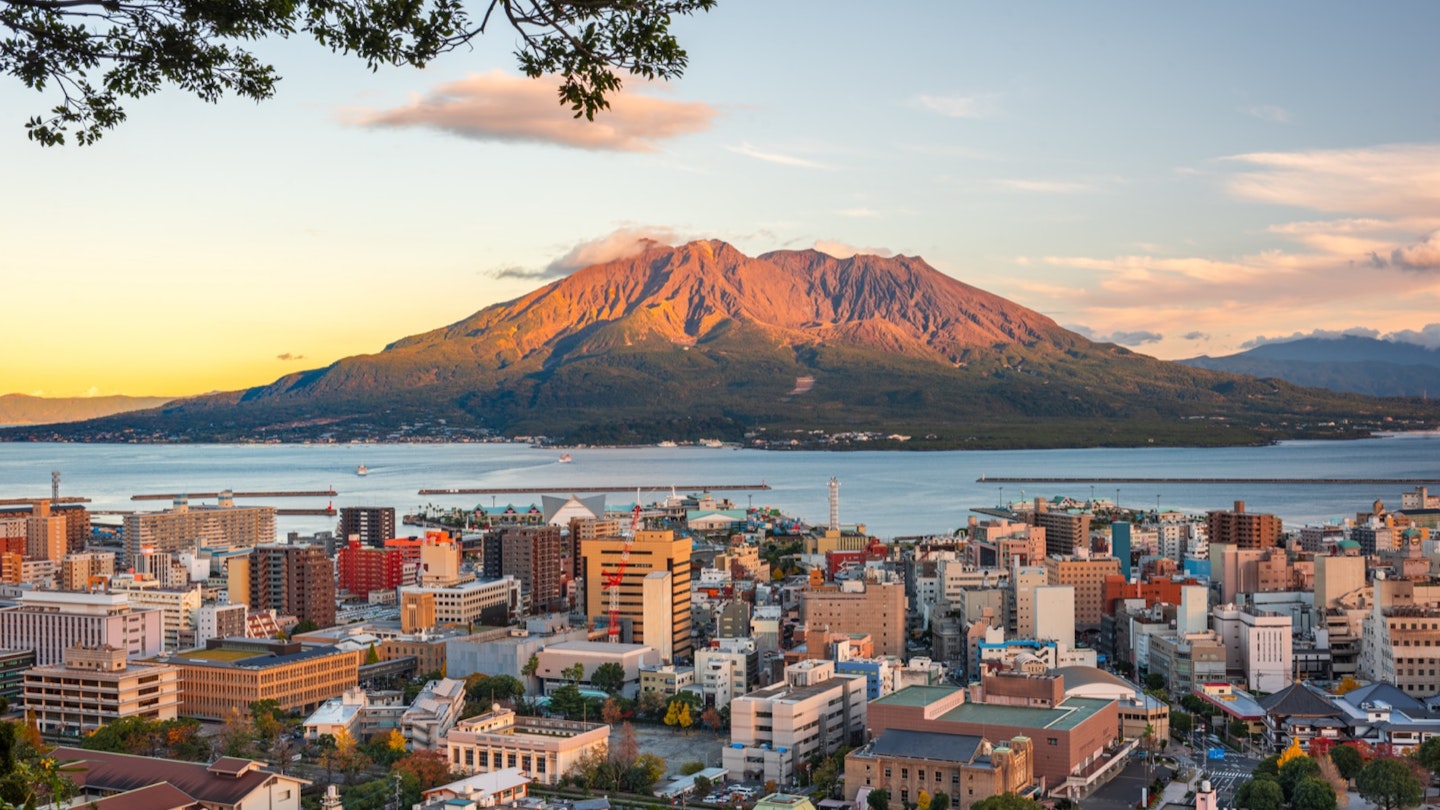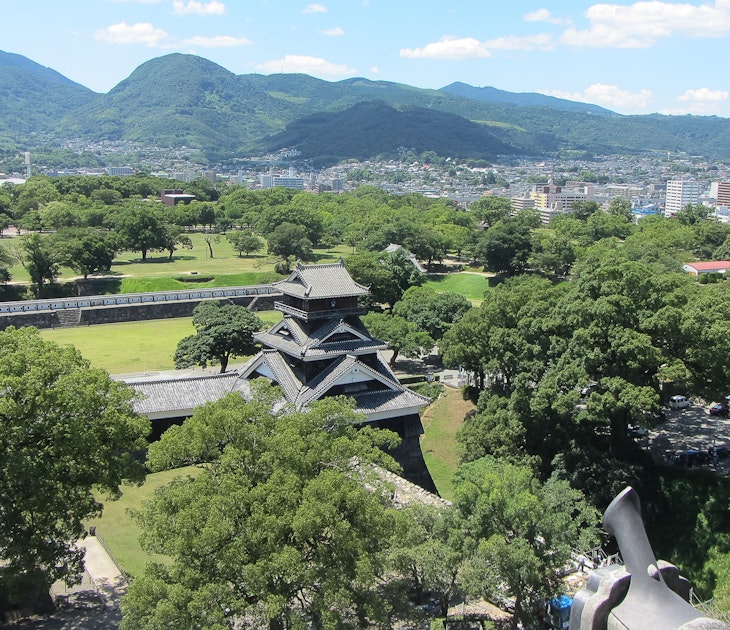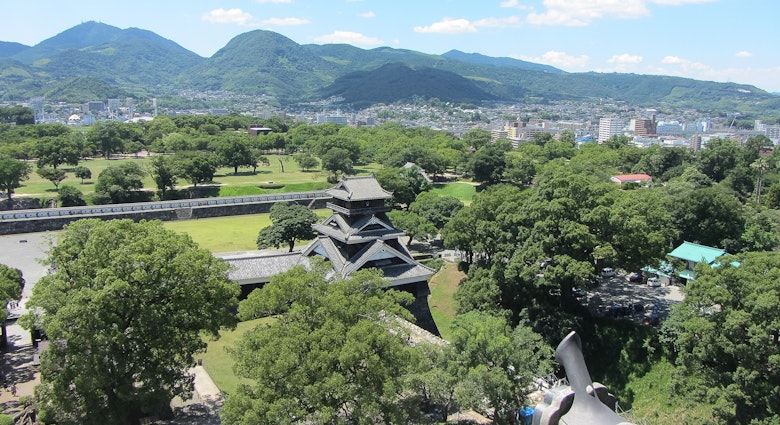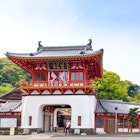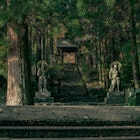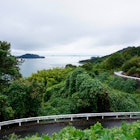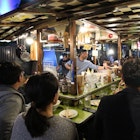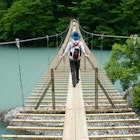Kyushu, Japan’s historic gateway to the outside world, has an iconic mix of fire (active volcanoes), water (cool blue seas), and unique wildlife attractions. Here’s some of our favorite locations in the southern- and westernmost of the country’s four main islands, which harness these elemental forces of nature in epic ways.
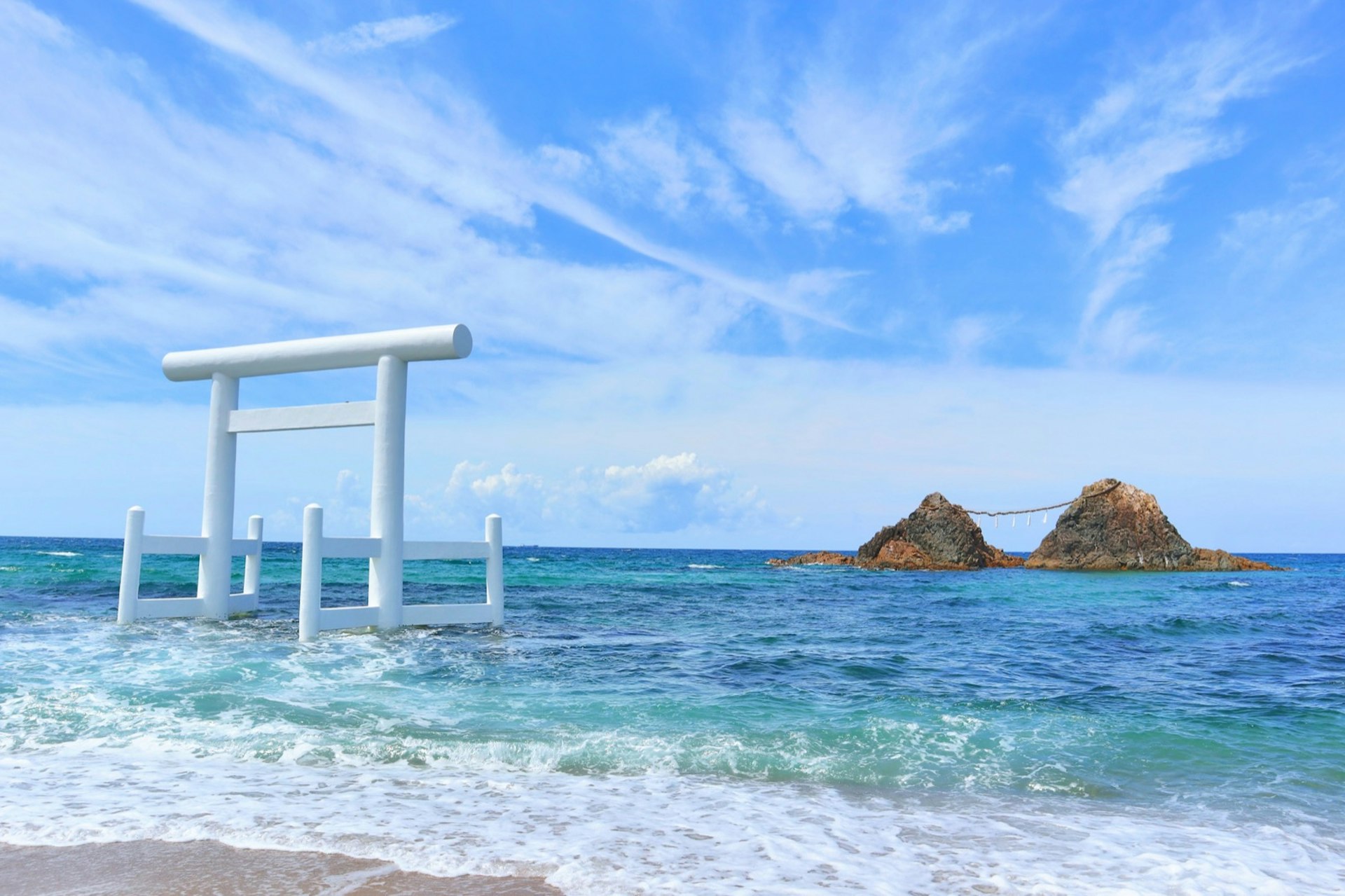
Water: Sakurai Futamigaura
As one of Japan’s best beaches, Sakurai Futamigaura in Itoshima, Fukuoka Prefecture, is also famous for its giant “couple rocks.” These two pyramid-shaped stones, standing about 500 feet offshore, are connected by a 100-foot-long shimenawa, a thick, twisted straw rope. In ancient times, it was believed a shimenawa had the power to ward off evil spirits.
The two rocks have come to represent marital bliss and matchmaking. And with a lovely white torii gate standing in the crashing waves, Sakurai Futamigaura truly is an incredible spot from which to view a romantic sunset. In summer, a picnic on the beach would make for a perfect afternoon. In winter, grill your own oysters for lunch at one of Itoshima’s oyster huts.
Nearby is Tateishiyama Nature Trail, which has spectacular views of the Keya Coast and far-off Keya no Oto – a fascinating cave whose inner reaches are only accessible by boat. It’s a relatively quick and easy hike up Mt. Tateishi, elevation 685ft.
Water: Kujuku Islands cruise
Say farewell to landlubbers on a Cruise through the Kujuku Islands from Sasebo, Nagasaki Prefecture. Kujuku literally means ‘99,’ but the phrase once was used to mean ‘a lot’ of something. In fact, there are 208 islands in the Kujuku Islands, which form part of the Saikai National Park. The fully electric cruise ship – which is built to resemble an old-fashioned pirate ship – is taken straight from your kids’ imaginations.
Oysters and pearls are produced in these waters and oyster beds can be seen as the ship weaves among the waterways. The islands themselves, surrounded by calm seas, look like gnarly bonsai forests desperately trying to cling to their pedestals of rock.
Farther down the coast is the bucolic seaside village of Shitsu. Tombi (birds of prey) might be riding the thermals overhead here, diving and climbing as you gaze toward distant islands. If they are, take 30 minutes to appreciate the spectacle – park just below the Michi-no-eki (Yuhi-ga-Oka Sotome Roadside Station), and the tombi may put on a command performance of their flying circus.
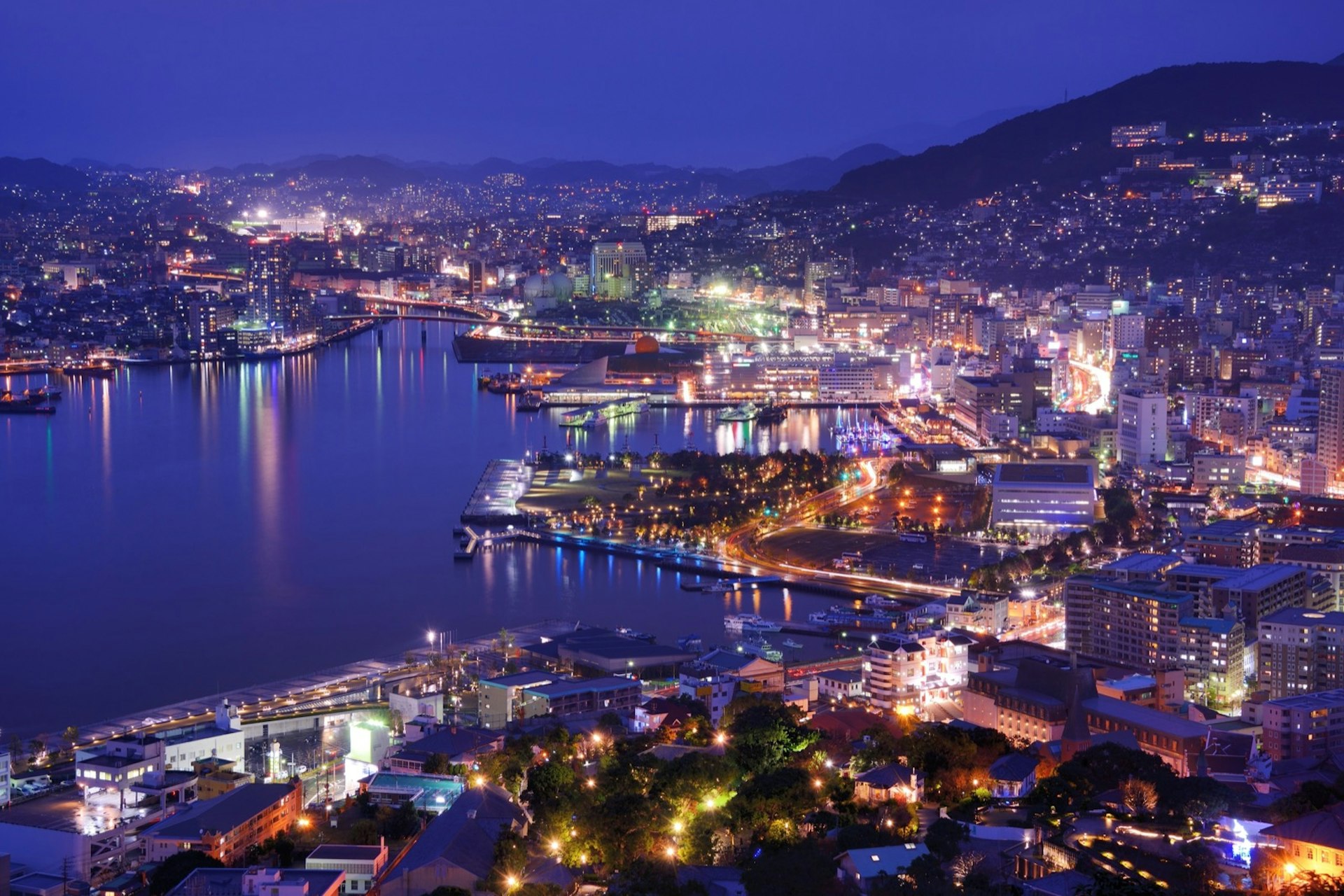
Water: Nagasaki Harbor
For panoramic views of Nagasaki and its harbor, you can’t do better than Mt. Inasa. West of the harbor, a cable car ascends every 15 to 20 minutes slowly revealing a fabulous tableau as the sun sets. Nighttime views from the top are ranked as one of the world’s three best, alongside Hong Kong and Monaco. From here and the tower at the top of the mountain, the city of Nagasaki appears to be completely encircled by the sea.
Several food and drink options – including the popular Shogun Burger, made with 100 percent Wagyu beef – are on offer near Mt. Inasa’s observation deck, a favorite spot for young and old alike. There are also deer and monkey enclosures located near the entrance to the slope car where visitors are encouraged to buy the animals healthy snacks out of nearby vending machines.

Fire: Mount Aso
In the middle of the island of Kyushu, in Kumamoto Prefecture, stands Mount Aso (5225ft) – the largest active volcano in Japan. It’s strikingly beautiful, yet its scale is so big that it's hard at first to comprehend. Its caldera is the world's third largest (80 miles in circumference) and now accommodates towns, villages and lush green farmland.
Aso last erupted, with massive damage to the surrounding areas, in 2016. The mountain's active volcanic peaks are located in the center of the caldera, including Mount Nakadake, whose spectacular crater is accessible to tourists again after the no-entry zone was lifted in 2020. Budding volcanologists will appreciate the chance view the crater, although the summit is frequently off-limits due to toxic gas emissions or strong winds.
Fire: Sakurajima
Farther south along the coast, the city of Kagoshima comes into view. It’s amazing the people of Kagoshima live alongside Sakurajima, one of Japan’s most active volcanoes. The volcano constantly billows smoke, and minor eruptions can take place multiple times each day.
In 1914 billions of tons of lava swallowed numerous island villages – 1000-plus homes – and joined Sakurajima to the mainland to the southeast. Near the east coast, the top of a once 10-foot-high torri emerges from the volcanic ash at Kurokami; the rest of it was buried in the eruption.
There are many points of interest around the ferry terminal, including a hot spring, foot baths, easy hiking trails and an information center. For an easy hiking tour, start at the ferry terminal and walk to the visitor center to get your bearings. Next, walk to the Karasujima Observatory and Akamizu Observatory Square. Finally, it’s on to the Hinoshima Megumikan Rest Stop before returning to Sakurajima Port.
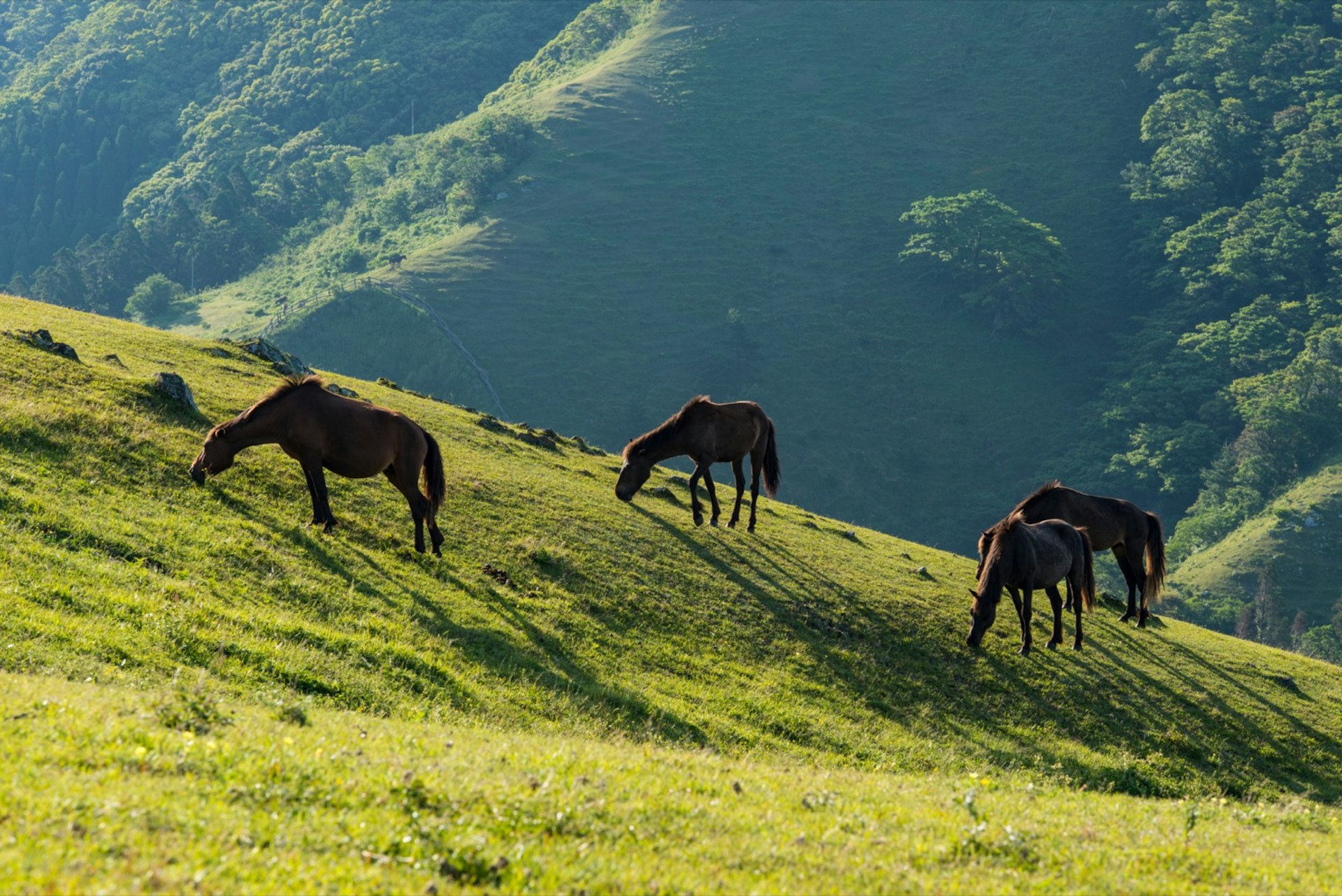
Life: Cape Toi
Not too far east of Kagoshima is Cape Toi, in the southernmost cape of Miyazaki Prefecture. Here, wild horses called Misaki-uma – said to be the descendants of army horses from the early Edo period (1603-1868) – live on the slopes of the hills overlooking the sea. Feeding the horses is prohibited, all trash must be taken home, and no vegetation should be disturbed. In other words, stress should be the only thing you leave behind in this magical place.
In addition to the wild horses, there are over 3,000 sotetsu palm trees to be found here. Sotetsu palms have not changed for over 200 million years, which means they may have once been dinosaur food. This southernmost point of Miyazaki prefecture is also home to a 22-acre coral colony.
With memories of angry mountains fresh in your mind, stunning views of the vast Pacific Ocean as a backdrop and scenes of Misaki horses grazing peacefully in the afternoon sun, it’s hard not to want to linger here, surrounded by Kyushu’s stunning natural beauty.
